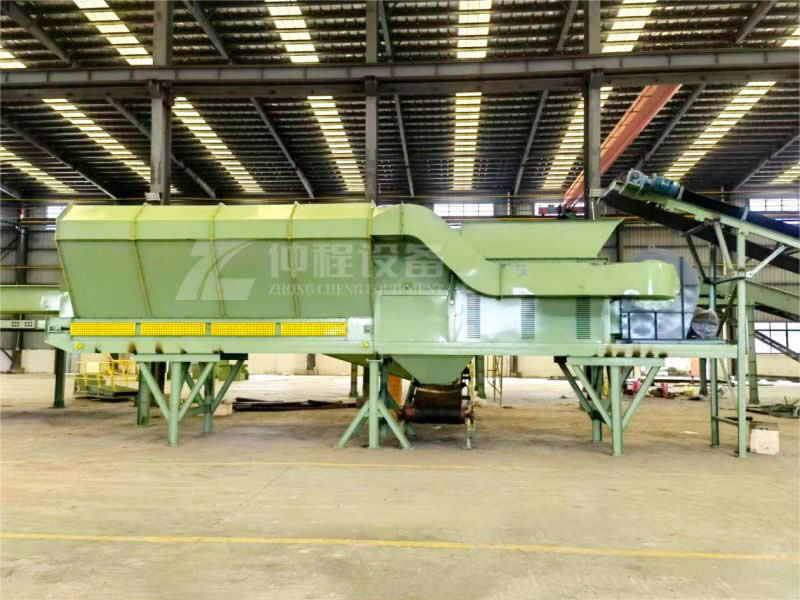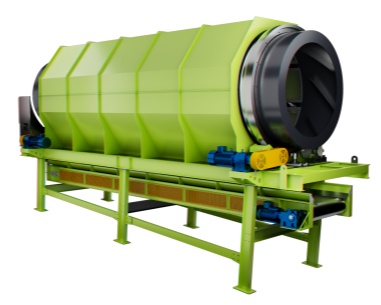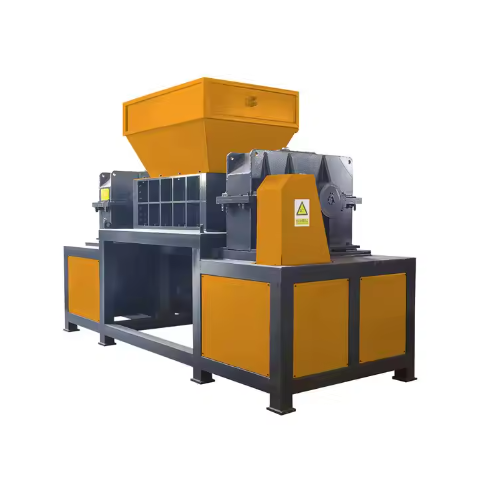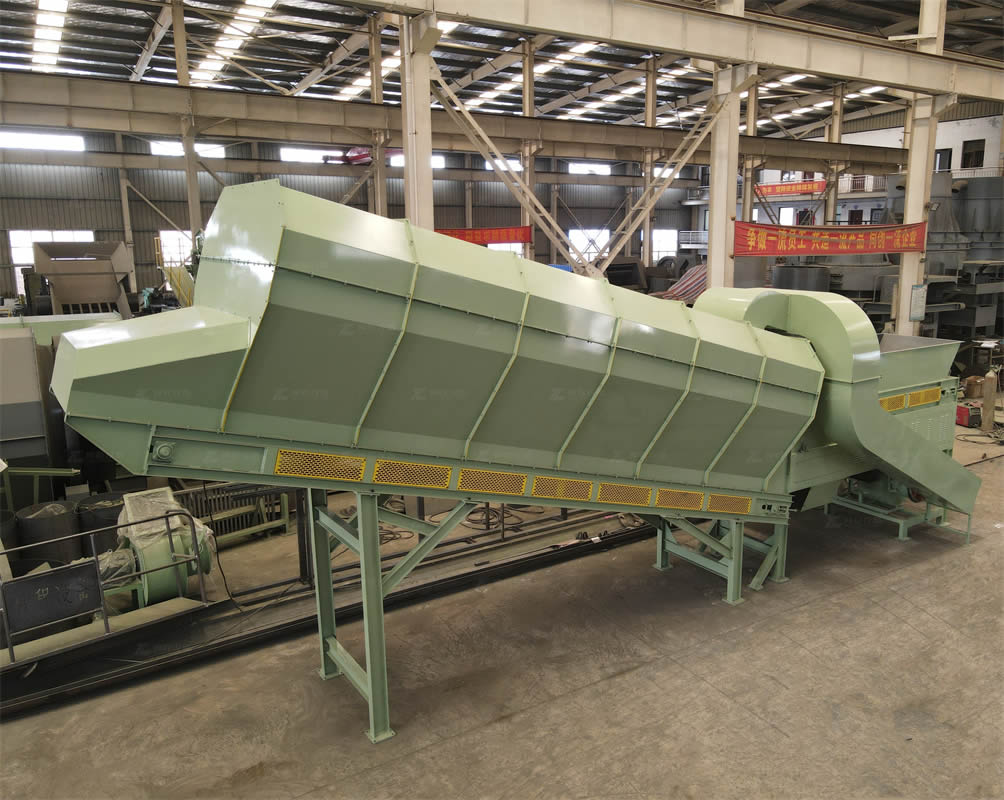The function and selection skills of garbage windsifter
Garbage wind separator is a sorting equipment used in the field of waste management and resource recovery, which separates light and heavy materials within garbage through the force of air currents. Garbage wind separators are widely applied in various sectors, including household waste sorting, construction waste selection, paper and plastic recycling, and metal separation.

Zhongcheng Environmental Protection Equipment - windsifter
A garbage wind separator mainly consists of four key components: the wind separator body, conveying system, airpower system, and control system. Its working principle is outlined below:
Wind Separator Body: The main sections include the wind chamber, wind channel, and discharge outlets. Inside the wind chamber, there is a stirring roller designed to transport garbage into the wind channel.
Conveying System: This system transports garbage to the feed inlet of the wind separator body for sorting. Common conveying equipment includes belt conveyors and screw conveyors.
Airpower System: Comprising blowers and air ducts, the airpower system directs airflow generated by the blower through the air ducts into the wind separator body, creating a specific airspeed within the wind channel to separate light and heavy materials.
Control System: It controls the operating status of the wind separator, such as adjusting the wind speed and controlling device start-up and shutdown.
![5ZMX56RWA0%~JH0P]RWTLPA.png](/uploads/allimg/20240620/1-240620113FT05.png)
The operational process of a garbage wind separator unfolds as follows: Garbage enters the wind separator body via the conveying system. Within the wind channel, the air current carries away lighter materials (e.g., plastic bags, paper scraps), which are discharged through the upper outlet of the wind separator. Conversely, heavier materials (e.g., bricks, tiles, metals) fall under gravity and exit through the bottom outlet. Consequently, the garbage is effectively sorted into two categories — light and heavy materials — making them easier to recycle and process further.
![)4BH70]76ROH9K3W24N)Z$1.png](https://www.zchmachinery.com/uploads/allimg/20240620/1-240620111455953.png)
Currently, there are three primary types of garbage wind separators available in the market: positive pressure sorting, negative pressure sorting, and combined positive-negative pressure sorting. Users should select the appropriate garbage wind separator based on their actual needs and the properties of the materials being processed.
When choosing a garbage wind separator, several critical factors must be considered:
Type of Waste Materials: Select a wind separator based on the variety and characteristics of the waste, such as municipal solid waste, construction waste, industrial solid waste, etc. Different types of waste may require distinct designs and configurations for the wind separator.
Processing Capacity: Determine the size and capacity of the wind separator based on the daily or hourly amount of waste that needs to be processed to ensure the equipment meets practical requirements.
Separation Efficiency & Precision: Evaluate whether the wind separator can efficiently separate lightweight waste (e.g., plastics, paper), heavyweight waste, and specific components like metals. The precision of separation directly impacts the quality and economic efficiency of resource recovery.
Equipment Structure & Technology: Check if the wind separator employs advanced and stable aerodynamic principles, such as a combination of positive and negative pressure airflows, and whether it has an efficient settling chamber design.
Durability & Ease of Maintenance: Opt for a wind separator made from sturdy, wear-resistant materials that are easy to maintain and operate, ensuring long-term stability and lower maintenance costs.
Environmental Standards: Consider whether the equipment complies with local environmental regulations during operation and possesses good sealing properties to minimize dust emissions and odors.
Energy Consumption & Economy: Understand the energy consumption level of the wind separator and compare the energy efficiency indicators across different brands and models to choose an energy-saving device, which will prove more cost-effective in the long term.
After-sales Service & Technical Support: Assess the supplier’s service quality, including post-sale installation and commissioning, operator training, maintenance services, and technical support guarantees.
Market Price & Cost-effectiveness: Compare quotes from different suppliers alongside the actual performance of their equipment to select a garbage wind separator with a high cost-performance ratio.
Customization Needs: If there are special waste sorting requirements or space constraints, a customized-designed wind separator may be necessary.
![%5J`Y786TVHR6(@~P]G5}%T.png](/uploads/allimg/20240620/1-240620110404B5.png)
Before purchasing, it is advisable to conduct on-site inspections or refer to real-life cases and collect user feedback to ensure the selected equipment meets the actual operational needs. Additionally, request manufacturers to provide demonstrations of sample machines or test data to make a more informed decision.
![]9Z8$13N~`XYVT~P}SWF(LN.png](/uploads/allimg/20240620/1-240620113JE46.png)
-
 Trommel screenTrommel screen, also known as drum screens, are widely used in various industries for sorting and separating materials.Get Quote
Trommel screenTrommel screen, also known as drum screens, are widely used in various industries for sorting and separating materials.Get Quote -
 Crop straw double shaft shreddApplications:Biomass Energy Production: Shredded straw can be used as a feedstock for bioenergy plants to produce electricity or heat.Livestock Feed: Reduced-si...Get Quote
Crop straw double shaft shreddApplications:Biomass Energy Production: Shredded straw can be used as a feedstock for bioenergy plants to produce electricity or heat.Livestock Feed: Reduced-si...Get Quote -
 Zhongcheng Air Drum SeparatorAir drum separators effectively separate lightweight materials (e.g., plastics, paper) from heavier materials (e.g., metals, glass). This high efficiency is cru...Get Quote
Zhongcheng Air Drum SeparatorAir drum separators effectively separate lightweight materials (e.g., plastics, paper) from heavier materials (e.g., metals, glass). This high efficiency is cru...Get Quote
-
2023-01-13Bag OpenerBag opener or bag opener system is a mechanical device used to automatically open and empty bags containing bulk materials. This system is commonly used in indu...
-
2023-01-12Horizontal Semi-Auto Hydraulic BalerSemi automatic balers are used across the logistics, recycling and manufacturing sectors to process large volumes of waste materials such as cardboard, film, pa...
-
2024-06-08Five factors influencing the output of a drum screen.The input efficiency and separation efficiency of the drum screen are controlled by the screen hole size, drum screen diameter, rotation speed, baffle type and ...
-
2024-05-29Landfill stale garbage screening projectAfter communicating with our domestic customers in Shandong Province, we learned that he needed to dispose of the garbage in the landfill through excavation, sc...
-
2024-06-11Optimize Your Waste Management Today with Our Advanced Drum ScreensUnderstanding the Mechanism and Optimization of Drum Screens for Waste Management



